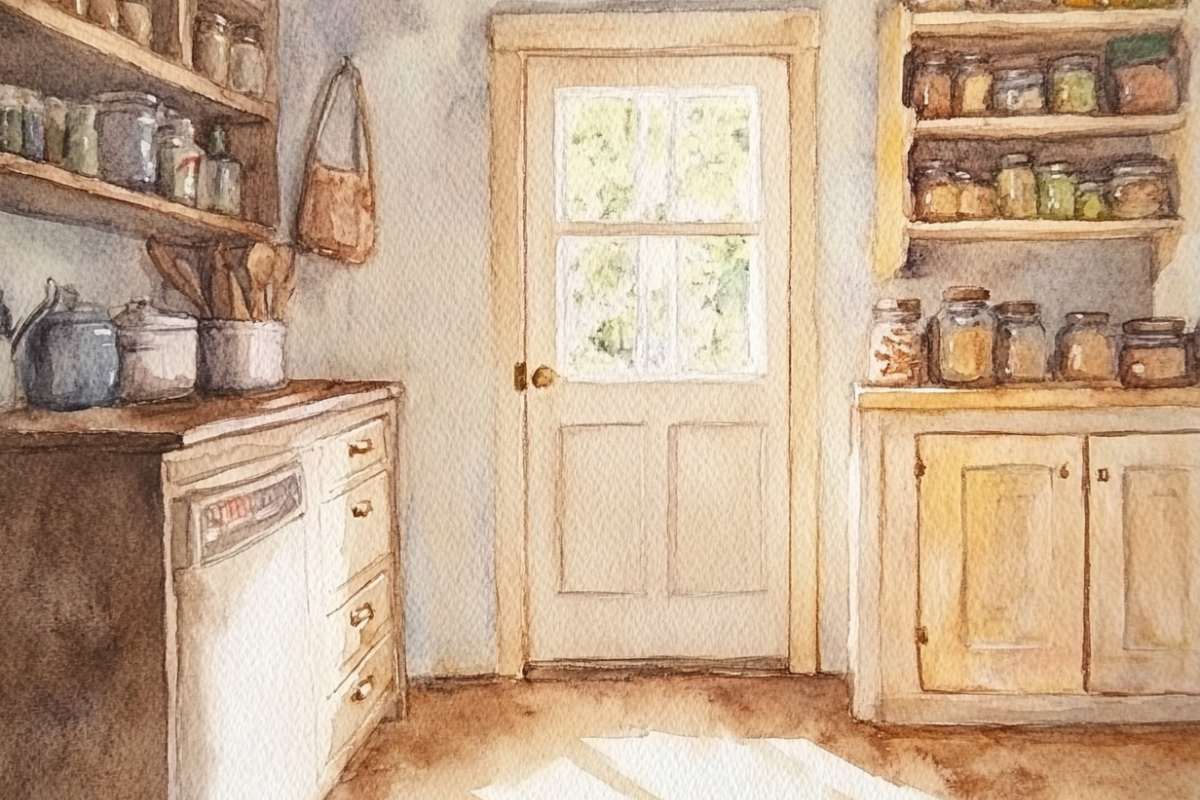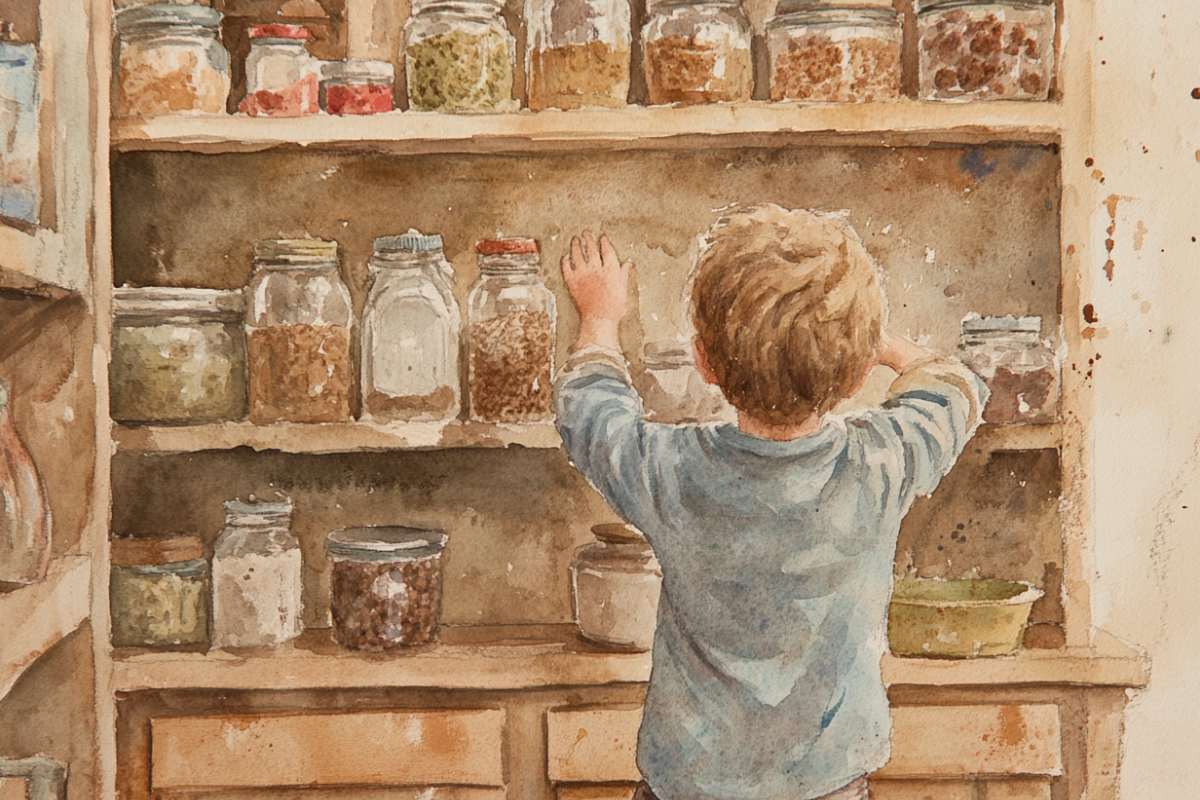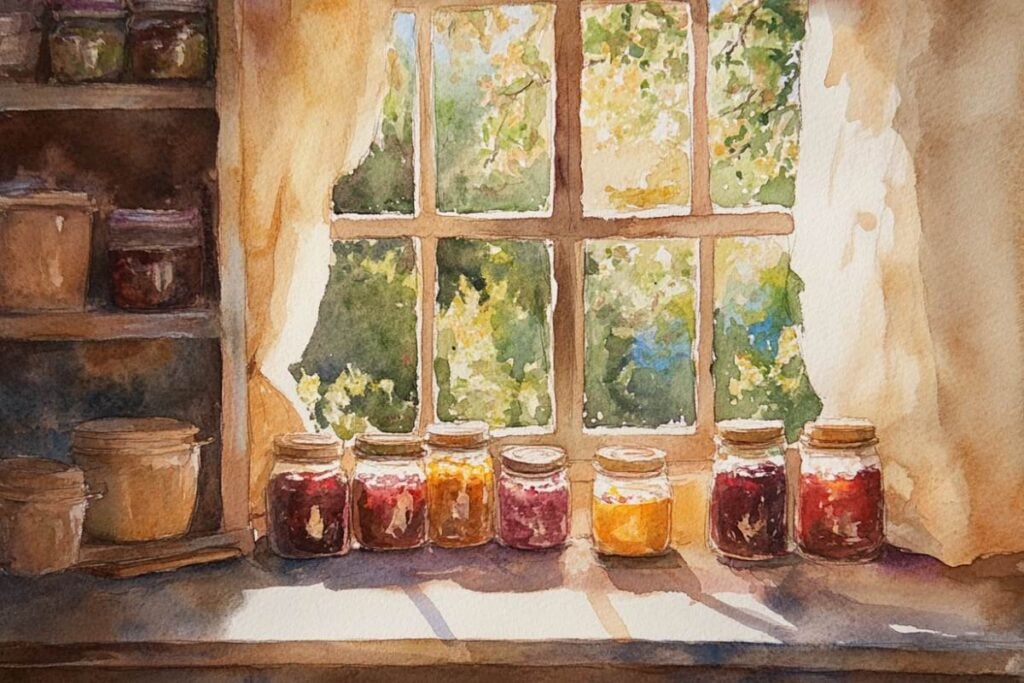How to Stock Your Pantry (In A Practical Way That Helps You)
Inside: how to stock a practical pantry filled with foods you’ll use. Over time, this will save you money and time and make you happier in the kitchen. Really! ❤️
There’s something romantic about a pantry, isn’t there? A basket of onions, a trio of sparkling jams, and boxes of pasta lined up perfectly.
But for some reason, the reality of your kitchen pantry is quite different. There’s an enormous box holding snacks no one likes, a few bags of flaxseed from that healthy eating kick you were on, and, oh yeah… the vacuum.
heirloom homemaker email course
A 5-day series straight to your inbox to help you create a beautiful home life.
No logins, no guilt, no overwhelm.
Promise.
I promise to keep your email address safe. Unsubscribe at any time

The truth is, your pantry can be more than just a neglected corner full of stuff you wish you hadn’t bought. Here’s how to stock a pantry designed for your family and filled with ingredients you’ll use. Done right, it will save you time and money.
Why a Pantry Makes Sense
You already have a pantry, in a sense, whether you realize it or not. There are multiple ingredients in your kitchen that you always have. You see it in a recipe and don’t need to shop for it. At the very minimum, salt. When you run low on salt, you buy it. It’s always there.
Now, imagine you had a fully stocked spice cabinet. (You probably do.) All your favorite herbs, spices, different kinds of pepper, kosher salt, the works. When you look at a recipe and see the seasonings needed, you probably have it. Cool.
Of course, we can extend this principle. What if you always had diced tomatoes, canned beans, or peanut butter?
What if you always had everything you need to make your regular meals? Always?
Start With Your Recipes
This is how we reverse-engineer a pantry that will work for you. The goal here is to stock up on foods you are actually going to eat, not to stuff a bunch of things on a shelf to gather dust.
So, pull out your recipe collection and start writing things down. When you come across a shelf-stable ingredient in one of your family’s favorite recipes, write it down. When you notice certain things coming up repeatedly, mark them with a star. These things will be the building blocks of your pantry.
Make a lot of stir-fries? Then, you’ll probably need to stock up on things like soy sauce and fish sauce.
Bake from scratch every week? Then, your list will have baking powder, flour, and more.
Home cooks who cook from scratch will likely have ingredients on their list. Some families will have prepared foods, mixes, and pre-made sauces. One is not better than the other! It is so important to be realistic while you are doing this. If you fill a shelf with brown sugar and never bake, you have wasted time, space, and money.
It Doesn’t Have to Be in Your Kitchen!
Your next step is to find a home for these things.
If you have a walk-in-pantry, that is wonderful! Maybe.
Take a look at that thing and make sure it’s set up well for your needs. Is there a mix of deep and shallow shelving? (Canned goods will get lost in deep shelves.). If you need special shelves and organizers, get them.

No walk-in pantry? Me neither. You’ll need to be a little more creative.
You can either find one central place, like an unfinished space in your basement or use multiple areas. I have many areas in my kitchen that function as pantry spaces and bulk storage in the basement. I store extra baking supplies on a high shelf above my baking corner, canned items and condiments in one lower cabinet, snacks and cereal above the fridge, and bulky items in the basement. It works!
If you have no extra kitchen space and feel super dedicated, try using the space under your bed (think of how many boxes of pasta could fit under there). You might also have a spare closet in a guest room.
Now, there’s no getting around the fact that stocking a pantry requires a little extra space. Once you pick the location, it’s time to set it up.
Keeping Things Organized
The biggest rule: don’t use deep shelves to store small items. They WILL get lost!
- Use bins or baskets for potatoes and onions (but not together!)
- Use different depths of shelving: 12 inches deep is plenty for smaller ingredients, and a little deeper is good for cases of drinks or 5-gallon-size drums.
- Consider a can organizer if you have deep shelves so things don’t get lost.
- As you use items, move everything to the front so you can stock in the back.
- Use refillable canisters if you buy in bulk, and store the bulk items in your basement.
- You can use your counter space to store foods if you find a pretty container.
- Use pasta organizers if you don’t finish a package in one meal.
- Consider keeping a pantry inventory list written down if you are prone to forgetting things.
- Take advantage of storage space inside the door with a rack to store narrow items like spices and vinegar.
Beyond Olive Oil: Example Kitchen Pantry Staples
(This is intended to be a jumping-off point to help you. Remember to look at your recipes to see what you need.)
Baking
- flour
- sugar (white and brown sugar)
- salt
- cocoa
- cornmeal
- baking soda
- baking powder
- yeast
Pasta, Grains, Rice, Beans
- pasta (spaghetti, elbow, all others you eat)
- popcorn
- oats
- rice (white and brown rice)
- dried beans
- quinoa and other whole grains
Canned
- canned tomatoes
- tomato sauce
- canned fruit
- pickles
- canned beans (black beans, baked beans, others)
- chicken broth
- olives
Condiments
- ketchup
- mustard
- salsa
- hot sauce
- soy sauce
- barbecue sauce
- mayonnaise
Produce
- onions
- garlic
- potatoes
- lemons
Spreads
- jams
- peanut butter (or other nut butter)
Oils and Vinegar
- cooking oil
- olive oil
- white vinegar
- specialty vinegar (red wine, sherry, rice, etc.)
- cooking spray
Seasonings
- garlic powder and onion powder
- chili powder
- sea salt
- kosher salt
- herbs and spices
- mixes like taco seasoning, ranch dressing, etc.
Convenience Food
- cereal
- cake mix
- snacks
- quick cooking pasta and rice mixes
Drinks
- coffee
- cider
- hot cocoa
Specialty Items
- coconut milk
- baking chocolate
- sesame oil
- dried fruits
Buying The Ingredients
If you have a warehouse club membership, now is a great time to use it to fill a new pantry.
But at a place that sells everything in bulk, you must be especially sure to only buy ingredients based on your recipes. Stick to your list!
If you aren’t a warehouse club member, you can make one trip, do it over time, or use an affordable grocery delivery service to avoid an overwhelming trip to the store.
Stocking Up on a Budget
Do you feel like all this sounds great, but your grocery bill is already high, and you can’t afford to buy extras of everything? I get it.
The answer to building a pantry on a budget is to do it bit by bit, over time. Set aside $5 per week and buy extras of just one thing. You can stock up on what’s on sale, start with the ingredients in your favorite meals, or follow my set plan on how to stock your pantry for a full year.
Just get started, however small it feels at first. Over time, you’ll be amazed by how far you’ve come. (This is a good philosophy for just about everything.)
Making Use of All This
Believe it or not, many people never eat the food they put in their pantry. Hopefully, we have avoided this by using our recipes and being realistic. But the next step is to consume this stuff.

When you work on your meal plan and shopping list for the week, don’t forget what you’ve already stored!
Of course, it is a great idea to replenish your stores and replace items as they get eaten. But make sure you are rotating things by eating what you have stored, not just eating your new purchases and letting things sit on the shelf indefinitely.
This brings us to…
How a Pantry Actually Saves You Money
Once you’ve stocked up on things, you are in control. You can (and should) add to your stash before you run out, but you have the luxury of time. You can wait for a sale or a great coupon deal and replenish ingredients at their lowest price.
Consider yourself well and truly out of something when you open the last one on the shelf. At that point, it goes on your grocery list and must be purchased, whether it’s on sale or not.
More Frugal Food Tips
- A well-stocked pantry is just one thing our grandmothers did to save money. Explore the rest here.
- Learn to save money on each trip to the grocery store.
- Meal planning and pantries go hand in hand.
Making Adjustments
As time goes by, you will get a great feel for what ingredients you really use up quickly and what you don’t need to buy for a while.
As your family grows and tastes change, certain items won’t be needed and others will join the list. Just account for those changes and you will be fine.
To Review
- Make a list of frequently used ingredients based on your family’s favorite recipes.
- Find a spot in your home for storage.
- Get any type of organizer you need to store your food.
- Use what you’ve purchased and replenish when prices are low.
- Add any needed ingredients to your pantry as you add a recipe to your rotation.
That’s it!
I hope this guide on how to stock your pantry helps you build a well-stocked food storage area that will help you save money, be prepared, and minimize your trips to the grocery store.
Love,











Thank you! This gave me the nudge I needed to get to cleaning and organizing my pantry! Can you recommend some storage jars?
hi Lisa, I like quart wide mouth son jus for rice/ chocolate chips/ smaller things. For larger items like flour and sugar I like the prokeeper containers.
Thank you for sharing this. I have a very tiny odd shaped pantry as the air duct to the house is behind it. I do keep all my dry goods in glass containers with seals and a latch if you call it that. I also have some in the little area which is part of my laundry area (no laundry room door). Your post is ever so helpful!
These are super helpful tips! My pantry is a disaster